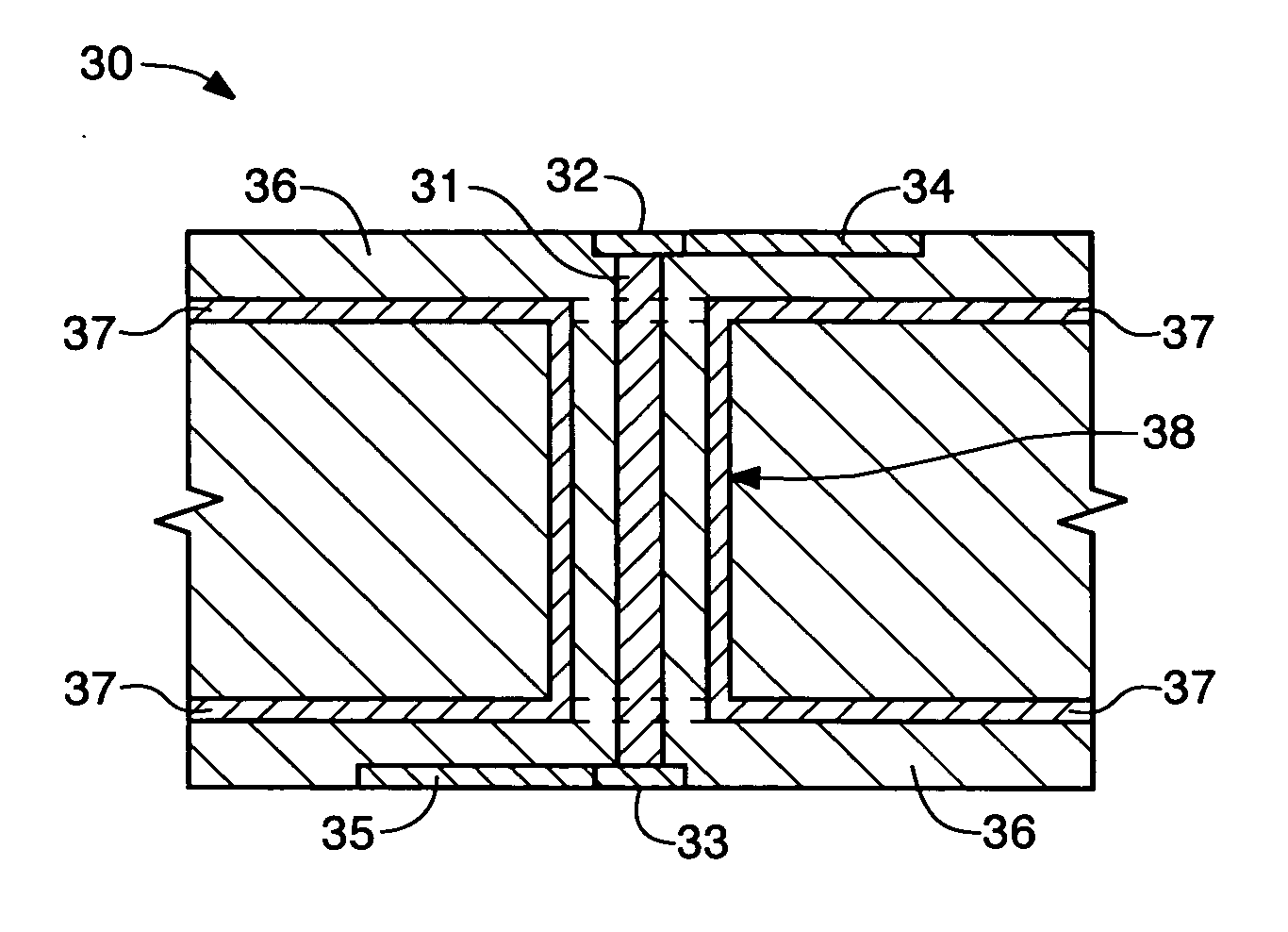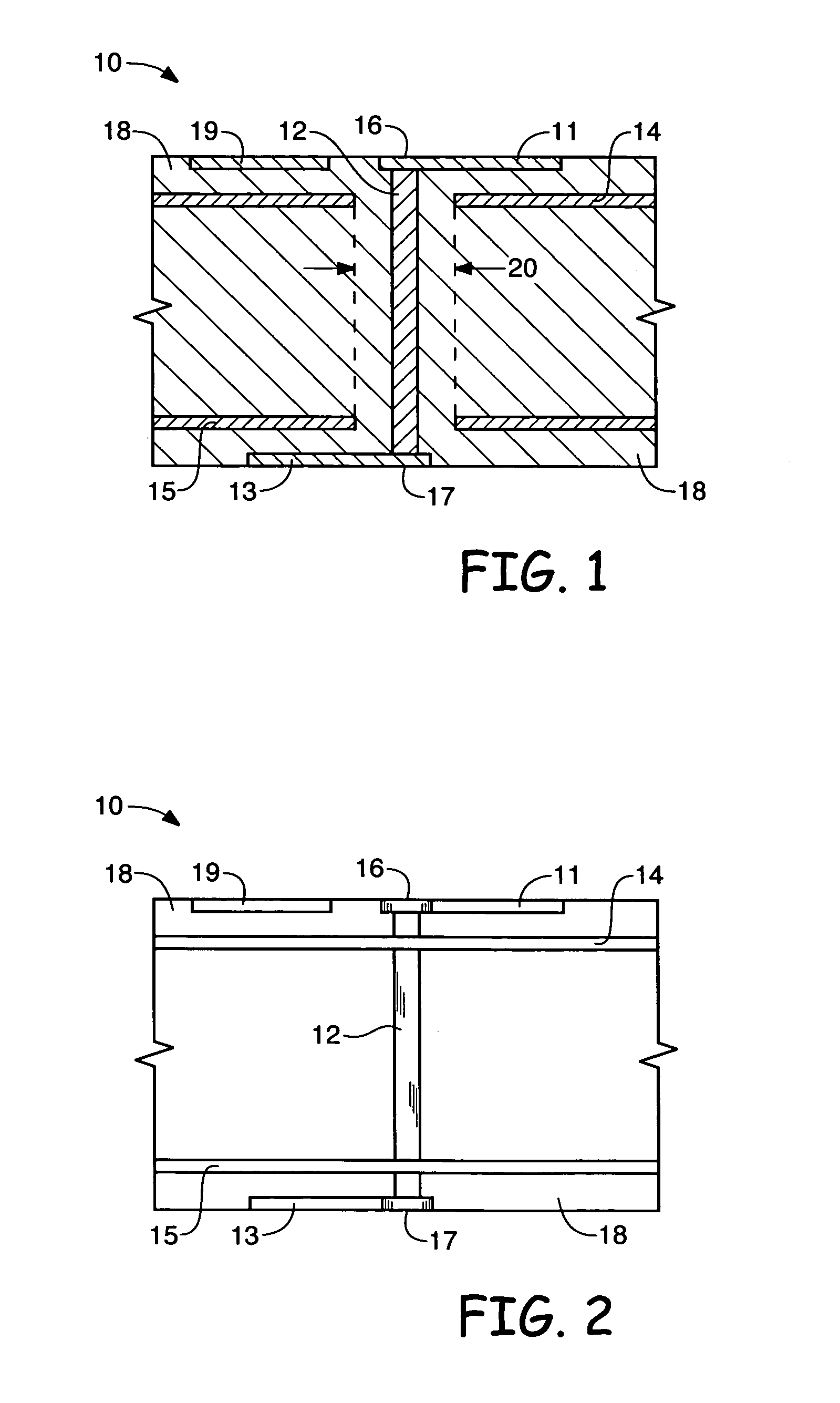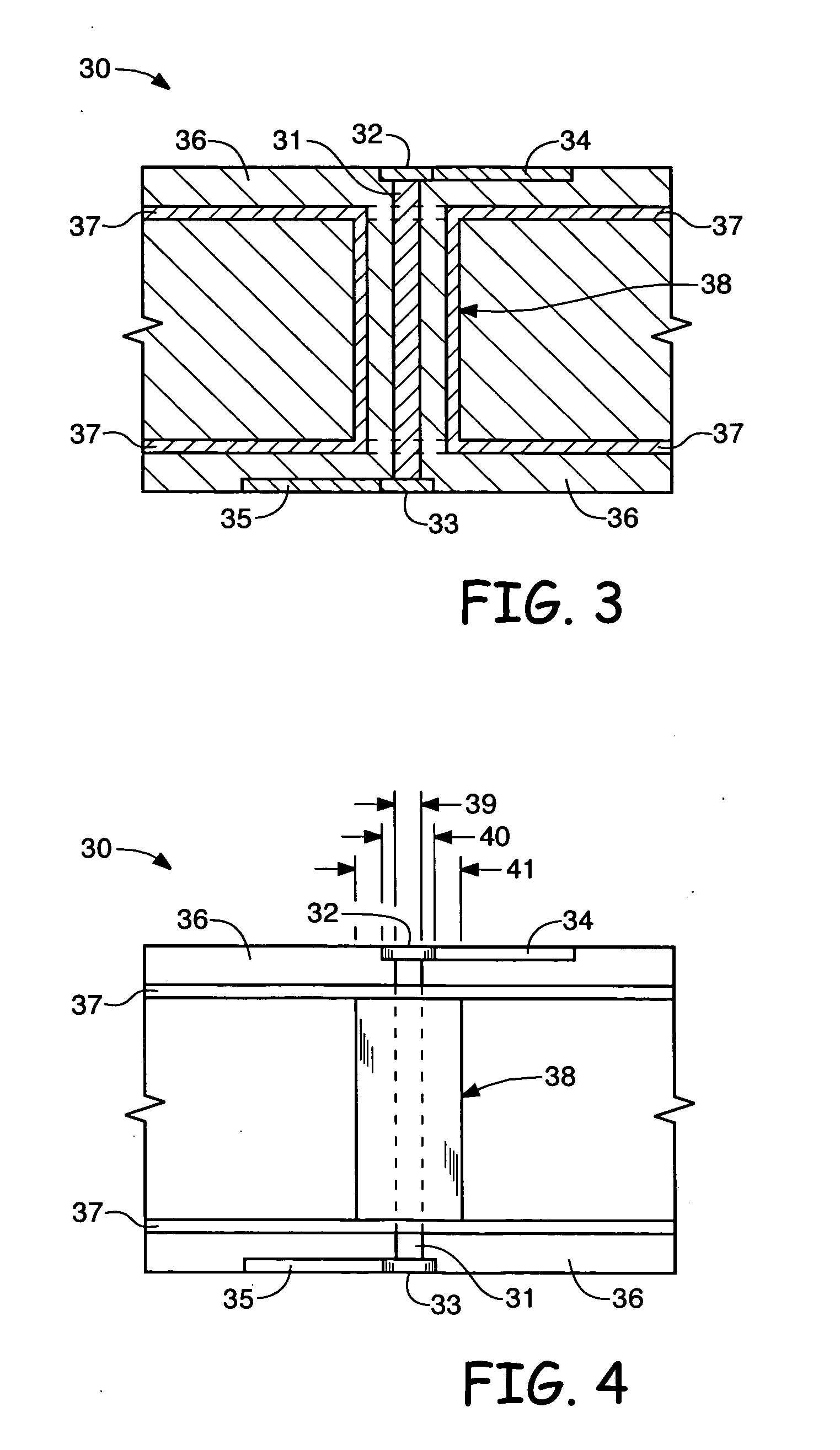Impedance matching via structure for high-speed printed circuit boards and method of determining same
a technology of printed circuit boards and via structures, which is applied in the direction of printed circuit components, printed circuit adaptations, printed circuit manufacturing, etc., can solve the problems of impedance mismatch at the via transition, physical size of the circuit continues to shrink, and the impedance mismatch poses a serious problem, so as to improve the signal transition, reduce radiation loss, and reduce the effect of signal reflection
- Summary
- Abstract
- Description
- Claims
- Application Information
AI Technical Summary
Benefits of technology
Problems solved by technology
Method used
Image
Examples
Embodiment Construction
[0018] An exemplary implementation of the present invention is directed to a printed circuit board via structure and a design process for forming same, as depicted in FIGS. 3 and 4.
[0019] Referring to FIG. 3, the cross sectional view of PCB member 30 shows a conductive cylindrical barrel 38 extending around and in electrical isolation from via cylinder 31 which forms an impedance matching PCB via structure. Top conductive via pad 32 and bottom conductive via pad 33 connect to the top and bottom ends of via cylinder 31, respectively. Top and bottom conductive signal interconnect traces 34 and 35 connect to top conductive via pad 32 and bottom conductive via pad 33, respectively. The conductive cylindrical barrel 38 is added around the via cylinder structure 31.
[0020] Referring to both in FIG. 3 and FIG. 4, conductive barrel 38 connects to both ground planes 37 (or to other power planes depending on the PCB design) and serves as the outer conductor which forms a coaxial structure in...
PUM
 Login to View More
Login to View More Abstract
Description
Claims
Application Information
 Login to View More
Login to View More - R&D
- Intellectual Property
- Life Sciences
- Materials
- Tech Scout
- Unparalleled Data Quality
- Higher Quality Content
- 60% Fewer Hallucinations
Browse by: Latest US Patents, China's latest patents, Technical Efficacy Thesaurus, Application Domain, Technology Topic, Popular Technical Reports.
© 2025 PatSnap. All rights reserved.Legal|Privacy policy|Modern Slavery Act Transparency Statement|Sitemap|About US| Contact US: help@patsnap.com



